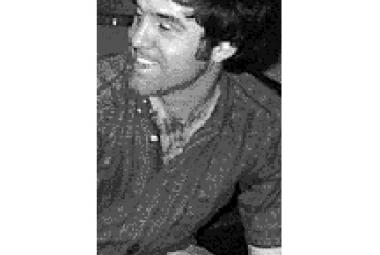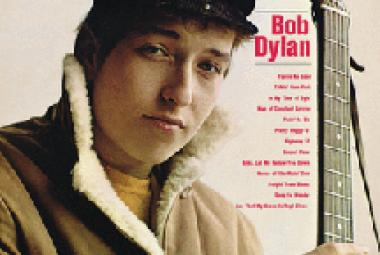Little Richard (born Richard Wayne Penniman; December 5, 1932) is an American recording artist, songwriter and musician. An influential figure in popular music and culture for more than six decades, Little Richard’s most celebrated work dates from the mid-1950s, when his dynamic music and charismatic showmanship laid the foundation for rock and roll. His music also played a key role in the formation of other popular music genres, including soul and funk. Little Richard has been honored by many institutions. He was inducted into the Rock and Roll Hall of Fame as part of its first group of inductees in 1986. (More from Wikipedia)
Little Richard is another man who helped lay the foundations of rock and roll. His hit songs – “Tutti Frutti”, “Long Tall Sally”, “Slippin’ and Slidin’”, “Jenny, Jenny”, “Ready Teddy”, “Keep a Knockin’”, “Good Golly, Miss Molly”, etc. – are so primal and so ingrained in the rock and roll milieu that it seems like they have always been there. Little Richard (real name: Richard Penniman) is sometimes unfairly dismissed as a one-dimensional shouter, but he brought a passion to his music – and a flamboyant personality to match – that made even Elvis Presley seem tame by comparison. His short stature only exaggerated the vehemence of his performances.
Quoting Richie Unterberger in Allmusic: “One of the original rock & roll greats, Little Richard merged the fire of gospel with New Orleans R&B, pounding the piano and wailing with gleeful abandon. While numerous other R&B greats of the early ’50s had been moving in a similar direction, none of them matched the sheer electricity of Richard’s vocals. With his bullet-speed deliveries, ecstatic trills, and the overjoyed force of personality in his singing, he was crucial in upping the voltage from high-powered R&B into the similar, yet different, guise of rock & roll.”
Little Richard’s first hit song, “Tutti Frutti” came out in September 1955 and was markedly different from his earlier, more traditional recordings. This song established the basic template for his parade of hit songs that would follow over the next couple of years. Even among the other rock and roll greats that I have already discussed, “Tutti Frutti” had an incredible impact and looks even better in retrospect.
In 2007, a panel of established recording artists voted on “The Top 100 Records That Changed The World”; as published in Mojo magazine, “Tutti Frutti” was voted #1 on the list, and the accompanying article lauded the record as “the sound of the birth of rock and roll”. The song was added by the U. S. Library of Congress to its National Recording Registry in 2010, noting that the “unique vocalizing over the irresistible beat announced a new era in music”.
The song opens with a cry of “A-wop-bom-a-loo-mop-a-lomp-bom-bom!!” and closes with the same cry except that it ends “. . . bam boom!!” In April 2012, Rolling Stone magazine declared that the opening cry in “Tutti Frutti” “has to be considered the most inspired rock lyric ever recorded”. To Little Richard, these syllables were a drum pattern that he heard in his head.
* * *
During the middle of a tour in late 1957 with Gene Vincent and Eddie Cochran, Little Richard had a series of visions – one of which turned out to be the launching of the first artificial satellite by the Soviet Union, Sputnik 1 – that convinced him to abandon his rock-and-roll life and go into the ministry. He shocked the world by announcing his conversion to Christianity while still a major star. He enrolled in a Bible College and formed the Little Richard Evangelistic Team in 1958.
By 1959, Little Richard was starting to make gospel recordings and had minor sales success with some of them; “He Got What He Wanted” made the Top 40 in the U.K. His childhood hero Mahalia Jackson acknowledged his gospel efforts positively; after working with Little Richard on his 1962 album King of the Gospel Singers, Quincy Jones said in 1984 that he was more impressed with those performances than those of anyone he had worked with.
* * *
Little Richard started edging back into rock and roll in 1962; a European tour with Sam Cooke where he sang his gospel material was not well received, but crowds enthusiastically applauded his older songs like “Long Tall Sally”, a song that the Beatles recorded in full-blown Little Richard style in 1964, with Paul McCartney on lead vocals. The same year, Little Richard unapologetically returned to rock and roll and released “Bama Lama Bama Loo” in 1964; however, public tastes had changed, and he spent much of the 1960’s and 1970’s in what should have been unnecessary self-promotion.
Not long ago, I picked up the above LP, Second Coming that reunited Little Richard with many of the original musicians on the 1950’s classics as well as the man who masterminded those recordings, R. A. ‘Bumps’ Blackwell. I’m not sure how sales were this time, but the recordings are thrilling without being as over-the-top as his original songs. A second LP came out later, along with a 2-CD collection. These records are a reminder of what we lost when Little Richard abandoned rock and roll for a higher calling, and what we gained when he made the return.
(June 2013/1)
* * *
Items: Little Richard















